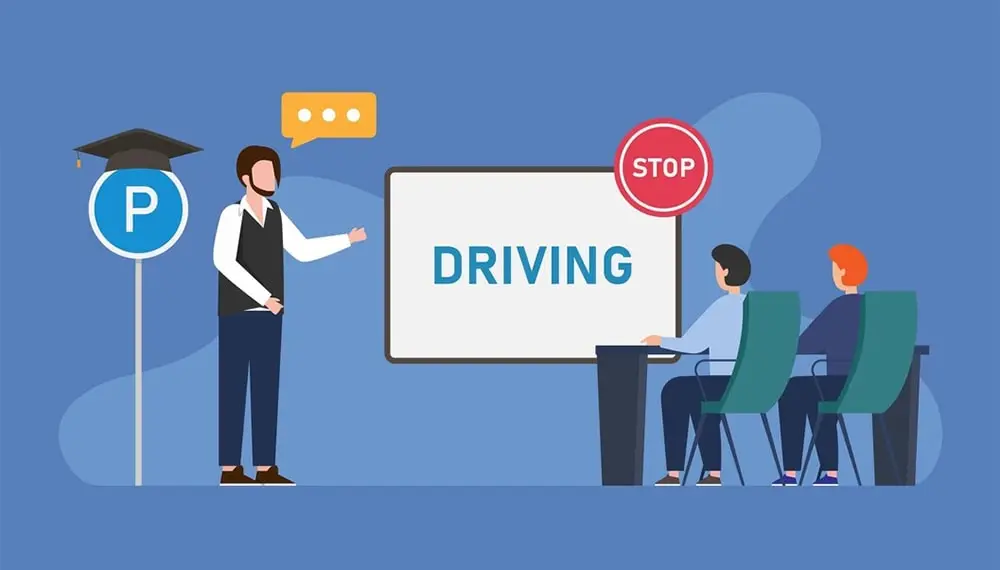DEI Training Guide for 2024 & Beyond
Rohit Kumar
03 Jun, 2024

Effective diversity, equity, and inclusion (DEI) training has become essential in today's rapidly changing workplace. Organizations seeking to adapt to an increasingly diverse workforce need a comprehensive approach to tackling hidden biases, building empathy, and fostering a culture of belonging.
Effective DEI training benefits organizations in multiple ways. It improves employee morale and engagement, reduces discrimination and unconscious biases, and ultimately contributes to better decision-making. A robust DEI framework also strengthens a company's reputation, helping it attract top talent.
This training guide aims to provide practical strategies for developing effective DEI programs. It will help organizations understand and implement tailored approaches that can address the unique challenges of their workforce.
Given the evolving nature of global business, organizations must remain proactive in their DEI efforts. This guide will assist leaders in making informed decisions about DEI training that will create sustainable, inclusive workplaces.
Key Concepts and Importance
Defining DEI Concepts
Diversity, equity, and inclusion (DEI) training addresses workplace biases, prejudice, and inequity. Each one contributes to shaping an inclusive work culture:
-
Diversity: Differences in characteristics such as race, ethnicity, gender, sexual orientation, and physical features, as well as differences in thought and experience
-
Equity: Fair treatment and impartiality in providing opportunities, resources, and advancement while addressing historical and structural barriers
-
Inclusion: Creating an environment where people feel respected, valued, and able to contribute fully to the organization's goals
Benefits of DEI Training
An effective DEI program provides benefits at various levels, including:
-
Employee Engagement: Employees who feel safe and accepted are more engaged and productive
-
Workplace Innovation: Diverse teams bring unique perspectives that can inspire creative problem-solving and innovation
-
Reputation and Talent Attraction: A culture of inclusion helps organizations attract top talent and maintain a positive employer reputation
Global Trends and Challenges
DEI training needs to keep pace with changing workforce demographics and emerging challenges. Global trends like remote work, migration, and social movements have increased the urgency for tailored training approaches. Some key challenges include:
-
Overcoming resistance to change from leadership or employees
-
Addressing unconscious biases ingrained in workplace policies and practices
-
Balancing global and local cultural differences in a multinational workforce
Understanding DEI concepts and their importance helps organizations build strategic training initiatives. These initiatives empower businesses to create more inclusive and productive workplaces.
Building a Comprehensive DEI Training Strategy
Assessment and Audit
To develop an effective DEI strategy, start by conducting an assessment. Surveys, focus groups, and data analysis help uncover the organization's current state. The findings offer insights into existing biases, workplace dynamics, and areas requiring immediate attention.
Goals and Objectives
Clearly outline goals based on the assessment outcomes. Ensure objectives align with the company's mission while addressing employees' needs. Some key goals might include:
-
Reducing discrimination and biases in hiring and promotions
-
Creating an inclusive work culture where all voices are heard
-
Enhancing cross-cultural communication and collaboration
Framework Development
Design a modular, flexible training framework that can be easily adapted. Tailor it to fit different employee roles and departments. Consider the organization's size, structure, and budget when building this framework. It should include various learning formats like workshops, e-learning, and discussion forums.
Role of Leadership
Organizational leadership plays a vital role in setting the direction for a DEI strategy. Encourage leaders to participate in training programs to demonstrate active commitment. Their involvement helps model inclusive behaviors and reinforces company values.
A comprehensive DEI training strategy requires assessment, clear goals, and a flexible framework to meet evolving workforce needs. Leadership support is also crucial for effective implementation, creating an inclusive culture that benefits the organization.
Implementing DEI Training Programs
Training Formats
Choosing the correct format is essential for successful DEI training. Popular options include:
-
In-person: Facilitated workshops provide an interactive setting for role-playing and group discussions
-
Virtual: Webinars and virtual classrooms enable flexible, scalable training, especially for distributed teams
-
On-demand: Self-paced e-learning modules allow employees to revisit crucial concepts conveniently
Content Customization
Customize training content to address the workforce's specific cultural nuances and demographics. Identify critical areas of concern, such as hiring biases or communication barriers between departments. Making training relatable resonates better with employees and prompts meaningful behavior change.
Interactive Learning
Encourage experiential learning through practical activities. Role-playing scenarios, case studies, and team discussions bring real-world situations into the training environment. This approach helps participants recognize biases, practice ally ship, and build cultural awareness.
Ongoing Support and Resources
Provide resources to reinforce training concepts beyond the initial sessions. These resources may include:
-
Guides and handbooks on inclusivity practices
-
Web-based forums for sharing insights and success stories
-
Access to mentors or internal DEI experts for personalized guidance
Feedback and Adjustments
Collect feedback from participants and analyze key performance metrics. Look for patterns in training effectiveness, identify areas needing improvement, and adjust future sessions. Constant refinement ensures the training remains relevant.
In conclusion, implementing DEI training requires careful selection of formats, customized content, and interactive learning. With ongoing support and feedback, organizations can create lasting changes that help establish a more inclusive culture.
Monitoring and Measuring Success
Key Metrics
Effective monitoring of DEI training requires identifying key metrics that align with the organization's goals. Track the following indicators to measure success:
-
Employee Engagement: Gauge satisfaction through surveys and feedback, especially from underrepresented groups
-
Retention Rates: Analyze turnover rates among different demographic groups to detect potential disparities
-
Productivity and Innovation: Monitor productivity improvements and the diversity of perspectives involved in new projects or ideas
-
Bias Reduction: Assess changes in discriminatory incidents or complaints over time
Feedback and Improvement
Collect feedback from training participants to assess the relevance and impact of the training. Combine qualitative data from focus groups and surveys with quantitative metrics for a comprehensive view. Use this information to identify gaps and refine future training programs. Consider:
-
What concepts were clearly understood, and which required further clarification?
-
Did participants feel supported and respected throughout the training?
-
Were the training formats conducive to learning?
Ongoing Development
Provide ongoing learning opportunities beyond the initial sessions to support continuous growth. Encourage microlearning, refresher courses, and peer coaching to reinforce key concepts. Regularly update training content to reflect evolving trends and social movements, ensuring the program remains relevant.
Creating a Culture of Accountability
Infuse accountability in your culture to ensure that the training delivers a lasting impact. Encourage leaders to model inclusive behaviors, support employee resource groups, and recognize employees who contribute positively to DEI efforts.
Effective monitoring and measurement require tracking key metrics, collecting feedback, providing ongoing support, and fostering accountability. That ensures the training leads to sustainable improvements in DEI culture across the organization.
Future Outlook and Recommendations
Technological Advancements
Tech innovation has a significant impact on DEI training. Artificial intelligence (AI) and machine learning can scrutinize employee feedback to identify patterns of discrimination and suggest corrective measures. Virtual reality (VR) simulations offer immersive scenarios that enable employees to practice inclusive behaviors and develop empathy.
Industry-Specific Approaches
Each industry has unique DEI challenges due to varying demographics, regulations, and customer expectations. Recommendations for building industry-specific approaches include:
-
Healthcare: Address unconscious biases in patient care and increase cultural sensitivity
-
Tech: Foster inclusive leadership to increase representation in technical roles
-
Finance: Reduce biases in hiring, promotion, and performance evaluation
Beyond 2024
As societal norms and workplace cultures evolve, DEI strategies should adapt. Focus on these guiding principles:
-
Continuous Learning: Implement regular refresher courses and provide access to resources that deepen employee understanding
-
Data-Driven Decisions: Collect data to measure progress, refine strategies, and identify emerging challenges
-
Collaborative Leadership: Encourage collaboration between leadership, HR teams, and employee resource groups to inform decision-making
Recommendations for Success
-
Inclusive Leadership: Leaders should model inclusive behavior, actively participate in training, and recognize DEI champions
-
Accessible Content: Make training materials available in multiple languages and ensure they're accessible for employees with disabilities
-
Safe Spaces: Create environments where employees feel comfortable sharing feedback and discussing biases
In summary, the future of DEI training lies in using technology, industry-specific approaches, and continuous improvement. Organizations prioritizing inclusive leadership and accessible training will be better equipped to create sustainable change.
Creating a comprehensive DEI training program is crucial for fostering a truly inclusive workplace. Such initiatives reduce biases, enhance collaboration, and improve employee engagement. DEI training is essential in today's dynamic environment to build an open-minded workforce that embraces different perspectives.
Training programs must be backed by strategic planning and continuous assessment. Clear goals, tailored frameworks, and active leadership support are vital to achieving meaningful results. Regular monitoring and feedback will ensure these efforts lead to sustained cultural change.
Core Competency understands the importance of effective DEI training. Its services include tailored e-learning, virtual classrooms, and competency management systems. These tools enable organizations to build impactful, lasting DEI strategies that align with their broader objectives.
Ready to enhance your DEI efforts? Book an online consultation with Core Competency to explore the right solutions for your organization.




